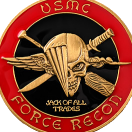Surface sheet corrosion treatment
-
Members Online
- Jeff Uphoff
- Justin Schmidt
- eman1200
- Jason Hardy
- Rick Junkin
- TCC
- redbaron1982
- Scooter
- Fly Boomer
- DonMuncy
- Rmnpilot
- AndreiC
- Gary0747
- milotron
- Marc_B
- BrentS
- Jake@BevanAviation
- toto
- Bartman
- exM20K
- 1967 427
- mluvara
- hubcap
- Dammit Bill
- Z W
- MikeOH
- Vance Harral
- LANCECASPER
- N201MKTurbo
- jetdriven
- BaldEagle
- shawnd
- 201Steve
- VetRepp
- laytonl
- ChuckSchneider
- Joe Linnebur
- Mmrkulic
- OSUAV8TER
- Mooney in Oz
- gabez
- Neshi
- dkkim73
- cliffy
- RescueMunchkin


Recommended Posts
Join the conversation
You can post now and register later. If you have an account, sign in now to post with your account.